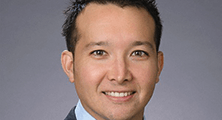Tim Mackey is the Director of the Global Health Policy Institute and an assistant professor at UC San Diego – and he has written numerous articles on the subject of counterfeit medicines. Recently, Mackey and his co-authors tried to assess the extent to which counterfeit drugs had penetrated global legitimate supply chains (1). The team used 2009-2011 data from the Pharmaceutical Security Institute Counterfeit Incident System (PSI CIS) database, which is based on both open and non-public data sources, and includes more than 1500 reports. The team encountered many challenges along the way, and the paper calls for more global cooperation between different stakeholders to improve counterfeit drug surveillance.

“The PSI CSI represents the most robust dataset available, but overall the data lacks the necessary detail needed for evidence-based action. First of all, there are only a limited number of countries making incident reports, which makes it difficult to model any potential associations between countries with counterfeits and other important factors such as income level or corruption,” says Mackey. “In addition, though the dataset benefits from reporting from a variety of information sources (public and private), there is no harmonization. Companies may operate in silos; only concerned with their own products and can be reluctant to share information.”
To make matters even more frustrating, Mackey adds that the international community cannot even agree on a definition for the problem or how to categorize between all the different terms: substandard, spurious, falsely labeled, falsified and counterfeit. This means that some countries will define the problem differently, which leads to a lack of fidelity and comparability of data, depending on the source. “Though some argue that a definition is needed for law enforcement and prosecution purposes, I think that it’s more important to focus on good surveillance,” says Mackey. “Surveillance and generation of reliable data on the global counterfeit drug trade drives everything. With good data, we can design anti-counterfeiting partnerships, programs, enforcement activities, and technologies in countries and for drugs that are at the greatest risk, and in the process save more lives. However, such a commitment would require significant partnerships and investments.” Some countries do not have the funds to engage in surveillance or to make it a priority. And Mackey believes that another issue is the lack of partnership between all the stakeholders involved. For example, drug manufacturers often have the resources needed to detect counterfeit versions of their medicines – and may already do sample buys of their own products in certain markets to help detect counterfeits – but it is actually the drug regulators, law enforcement, and customs officials who are in the best position to protect patient safety and educate the public about the dangers of counterfeit medicines. Mackey adds, “There are some success stories, but I also think that there has not been sufficient action at the international level, particularly with WHO giving up on the IMPACT public-private partnership cooperation mechanism and moving to the member state only mechanism that is embroiled in international politics on the issue.” Some key findings from Mackey’s assessment can be find below.

References
- T. Mackey et al., “Counterfeit Drug Penetration into Global Legitimate Medicine Supply Chains: A Global Assessment,” Am. J. Trop. Med. Hyg., 92, Suppl 6, 59-67 (2015).




